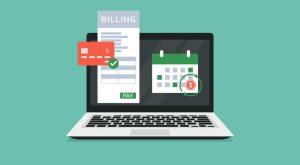 Depreciation is one of the most powerful tax advantages available to real estate owners. If you own commercial property or use real estate in your business, depreciation deductions can significantly reduce your taxable income over time. However, many business owners miss out on maximizing these benefits due to a lack of understanding.
Depreciation is one of the most powerful tax advantages available to real estate owners. If you own commercial property or use real estate in your business, depreciation deductions can significantly reduce your taxable income over time. However, many business owners miss out on maximizing these benefits due to a lack of understanding.
Here’s a clear and practical guide to how depreciation works for business real estate and how you can use it to your financial advantage.
What Is Real Estate Depreciation?
Depreciation is the process of deducting the cost of a long-term asset over its useful life. For real estate, this means that instead of writing off the full cost of a building in the year it was purchased, you gradually deduct portions of its value each year.
Importantly, land itself does not depreciate—only the building and certain improvements do.
Depreciation Basics for Business Property
- Depreciable assets: Buildings, structural components (roof, HVAC, plumbing), and certain improvements
- Non-depreciable assets: Land, inventory, and personal residences
- Depreciation method: The IRS requires the Modified Accelerated Cost Recovery System (MACRS)
- Depreciation period:
- Residential rental property: 27.5 years
- Commercial property: 39 years
How to Calculate Depreciation
Let’s say you buy a commercial building for $1 million, with land valued at $200,000. Only the building portion ($800,000) is depreciable.
Annual depreciation deduction = $800,000 ÷ 39 = $20,513 per year
That’s over $20,000 per year in tax deductions—without spending another dime.
Requirements for Depreciation
To claim depreciation on a property:
- You must own the property (not lease it).
- You must use it for business or income-producing purposes.
- It must have a determinable useful life (expected to last more than a year).
- The property must be placed in service (available for use) before you can begin depreciation.
Improvements vs. Repairs
- Repairs (e.g., fixing a leak) are usually fully deductible in the year incurred.
- Improvements (e.g., replacing the roof or adding a new HVAC system) must be capitalized and depreciated over time.
Bonus Depreciation and Section 179
Although buildings themselves must be depreciated over decades, certain components or improvements may qualify for bonus depreciation or Section 179 expensing, allowing you to deduct more upfront.
- Bonus Depreciation: Temporarily allows 100% immediate expensing of qualified improvements (dropping to 80% in 2023 and phasing out by 2027 under current law).
- Section 179: Allows immediate expensing of certain improvements, such as roofs, HVACs, and alarm systems, up to a limit ($1.22 million in 2024, subject to phaseouts).
These tools can accelerate deductions and improve cash flow.
Cost Segregation: Supercharge Your Depreciation
A cost segregation study breaks your building into components (e.g., flooring, lighting, fixtures) that can be depreciated faster—over 5, 7, or 15 years instead of 39.
While the study involves a cost (usually performed by specialists), the tax savings can be substantial—especially for high-value properties.
What Happens When You Sell? Depreciation Recapture
Depreciation lowers your taxable income, but it can also increase your tax bill when you sell.
- Depreciation recapture: When you sell the property, the IRS may “recapture” depreciation and tax it at a maximum rate of 25%.
- That doesn’t mean depreciation isn’t worth it—far from it—but you should plan ahead with your accountant or tax advisor to manage the exit strategy.
Documentation and Compliance
To stay compliant:
- Keep detailed records of the purchase price, improvement costs, and depreciation schedules.
- Use IRS Form 4562 to report depreciation each year.
- Consult a tax professional to ensure accuracy and to explore strategies like cost segregation and bonus depreciation.
Final Thoughts
Depreciation deductions can significantly lower your tax liability and free up cash for reinvestment in your business. By understanding how to apply these rules to your commercial real estate, you can build wealth more efficiently and strategically.
Remember: Real estate doesn’t just appreciate in value—it also helps you depreciate your tax burden.
 QuickBooks Online is good at saving you time and keystrokes. Here’s another way it helps avoid duplicate data entry.
QuickBooks Online is good at saving you time and keystrokes. Here’s another way it helps avoid duplicate data entry. Cash flow is the lifeblood of any business. Regardless of how innovative your product is or how many sales you generate, if there’s not enough cash available to cover day-to-day expenses, your business could quickly find itself in trouble. Managing cash flow effectively ensures your company remains financially healthy and resilient during economic ups and downs. Here’s a comprehensive guide to help you properly manage your business cash flow.
Cash flow is the lifeblood of any business. Regardless of how innovative your product is or how many sales you generate, if there’s not enough cash available to cover day-to-day expenses, your business could quickly find itself in trouble. Managing cash flow effectively ensures your company remains financially healthy and resilient during economic ups and downs. Here’s a comprehensive guide to help you properly manage your business cash flow.
 One of the biggest challenges small businesses face is managing a steady cash flow. Keeping income ahead of expenses is a constant balancing act. QuickBooks Online can help. With easy-to-use forms and a convenient mobile app, it helps you track and deposit incoming payments with ease.
One of the biggest challenges small businesses face is managing a steady cash flow. Keeping income ahead of expenses is a constant balancing act. QuickBooks Online can help. With easy-to-use forms and a convenient mobile app, it helps you track and deposit incoming payments with ease. Saving for a house and investing for retirement are two of the biggest financial goals many people pursue—but trying to do both at the same time can feel like a balancing act. One requires upfront cash for a near-term purchase, while the other is a long-term investment in your future. How do you prioritize one without sacrificing the other?
Saving for a house and investing for retirement are two of the biggest financial goals many people pursue—but trying to do both at the same time can feel like a balancing act. One requires upfront cash for a near-term purchase, while the other is a long-term investment in your future. How do you prioritize one without sacrificing the other?
 Buying a home is a significant milestone and a major financial decision. Whether you’re a first-time buyer or looking to move into your next home, you’re bound to have many questions about the process. To help make your journey smoother, we’ve compiled some of the most common buyer questions and provided detailed answers to each. This guide will help you make informed decisions and avoid common pitfalls.
Buying a home is a significant milestone and a major financial decision. Whether you’re a first-time buyer or looking to move into your next home, you’re bound to have many questions about the process. To help make your journey smoother, we’ve compiled some of the most common buyer questions and provided detailed answers to each. This guide will help you make informed decisions and avoid common pitfalls.